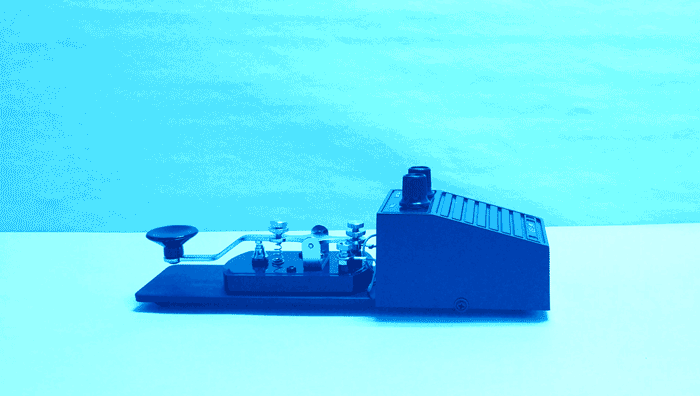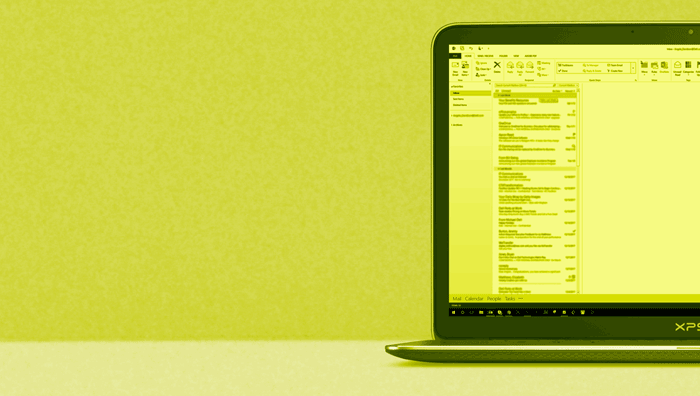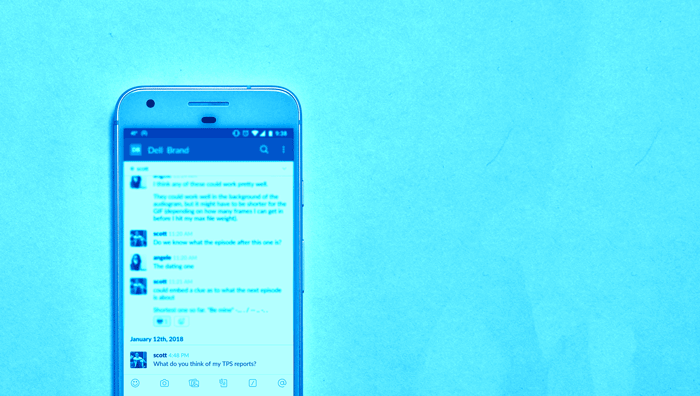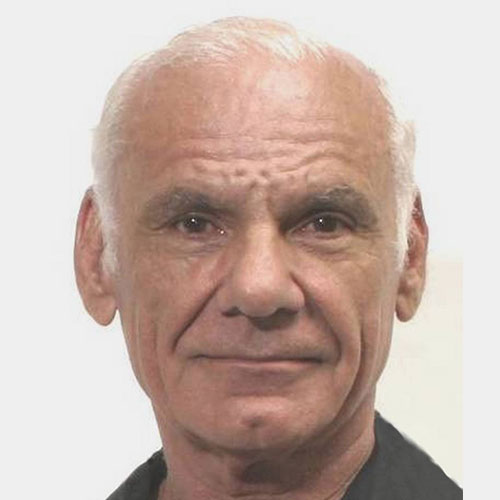WALTER ISAACSON: Hello, Walter here, with a quick favor to ask. We’re in the process of planning new episodes and new ideas for “Trailblazers,” and we’d love to hear what you think. We’ve put together a quick survey on our website delltechnologies.com/trailblazers. The survey takes around two or three minutes and your input is incredibly helpful to us. Again, you can find the survey at delltechnologies.com/trailblazers. And now, on with the show.
It’s 1825, and the American artist Samuel Morse is on top of the world. A member of the elite Royal Academy of Artists, and one of the most respected painters of the era, he was in Washington, DC, to paint a portrait of an old friend, the Revolutionary War hero, the Marquis de Lafayette.
For Samuel Morse, this should have been a happy time. But it wasn’t, because while he was there, tragedy struck. One day, during a setting, he received an urgent message from his father in Connecticut. Sent by horse and rider, it informed Morse that his wife, Lucretia, was desperately sick. The next day, he received even worse news. His wife had succumbed to her illness and died.
When Morse finally made it home, she was already in the ground. Morse was despondent that he hadn’t gotten the message in time, and in his grief, he began to think back to a technology that had fascinated him years before– a principle that had only recently been harnessed by scientists– electricity.
SAMUEL MORSE: There must be a way
WALTER ISAACSON: — he reasoned–
SAMUEL MORSE: to use electricity to communicate at faster than horse speed.
WALTER ISAACSON: For decades, Morse descended into poverty as he worked on the invention that would immortalize him. Out of Samuel Morse’s grief came the electric telegraph and the coded language that still bears his name, the Morse code. And the networks created by this invention fundamentally shifted and shaped the way we communicate with each other, even today.
I’m Walter Isaacson, and you’re listening to “Trailblazers,” an original podcast from Dell Technologies.
[MUSIC PLAYING]
RADIO VOICE 1: The miracle of high-speed wire communication is commonplace today,
RADIO VOICE 2: an ultra modern telegraph method,
RADIO VOICE 3: that is close to magic.
RADIO VOICE 2: Yes, we call it, speed way for words.
RADIO VOICE 3: Swift, reliable communication.
RADIO VOICE 1: It was direct; it was fast.
RADIO VOICE 2: To serve the communications needs of America.
WALTER ISAACSON: The way we communicate, and the way we do business, has always been inextricably linked. For as long as there’s been commerce, we’ve needed ways to keep track of it, be they receipts, or ledgers, or contracts. But to understand how written communication may shift in the future, it’s worth taking another look back at the 19th century, to Samuel Morse’s invention. Until Morse came along, the world was a far more isolated place. The flow of information was almost unbearably slow, and the rare speedier method were usually limited in what exactly they could communicate.
TOM STANDAGE: If look at the world before the electric telegraph, you’ve got a situation where the quickest way to send a message is by ship or by somebody riding on a horse very fast.
WALTER ISAACSON: Tom Standage is the author of “The Victorian Internet– The Remarkable Story of the Telegraph and the 19th Century’s Online Pioneers.”
TOM STANDAGE: So you can’t send a message faster than you can send a physical object unless you’ve agreed you know what lighting the beacons on the top of the hills means. It means, you know, the enemy is coming or something like that.
WALTER ISAACSON: The ability to effectively communicate complex messages over long distances had been sought out by scientists and innovators for hundreds of years. But it wasn’t until the late 18th century that it really started to pick up steam.
TOM STANDAGE: And there’s a couple of French inventors, the Chappe brothers, and they invent this machine, which is essentially a system of movable arms on top of a tower. And there’s a big crossbar, and then it has two little arms on the end. And the crossbar can be put in various positions. And this gives you 90-something combinations, and depending on which configuration you put the arms in, you could use it to represent numbers and letters and things like that. The Chappe brothers coined the term telegraph for “far writer”– so, to be able to send messages quickly, writing over a long distance– and the French built the first national telegraph network.
WALTER ISAACSON: The telegraph system became one of the first truly national communication networks. Napoleon enthusiastically used the network to coordinate his troops on his military campaigns, but their system had some major limitations. Its bandwidth was restricted. By design, only one message could be sent at the time, and each message required a great deal of human labor and had many points of failure.
It took a genius mind like Samuel Morse to apply the relatively new concept of electricity to what the Chappe brothers had developed decades earlier.
TOM STANDAGE: A lot of people at the time in the 1820s and 1830s were experimenting with electricity, and he saw one of these demonstrations and said, oh, well if you could make something happen at a distance using an electrical current, then you could make a telegraph. You could make an electric telegraph. And it took an entrepreneur like Morse to come along and say, oh, we could actually make a useful product out of this.
The technology to do it actually existed for quite a long time, and what it really needed was somebody with the vision to start building networks and to start persuading people that this was a useful technology.
WALTER ISAACSON: Morse lived in poverty for years as he worked on his invention, teaching painting on the side to make ends meet. At times he went whole days without eating. Finally, once he had a working prototype, he was able to successfully petition Congress to build the first long-distance telegraph line, linking Washington D.C. and Baltimore, 40 miles away.
“What hath god wrought,” was the famous first message sent out on the line.
The electric telegraph truly connected the world in a way that was unprecedented. What followed was a network of cables laid across the oceans where messages could be sent almost anywhere in a matter of mere minutes. Instantaneous global communication had finally arrived, and that changed everything.
While the telegraph was taking over the world, another technology was quietly being born, although it would take over a century for it to find its way into offices.
The very same year Morse convince Congress to build America’s first long distance telegraph line, an inventor across the pond took out a patent for a communications device most of us don’t associate with the 1800s.
JONATHAN COOPERSMITH: The first patent for the fax machine was in 1843 by a Scotsman, Alexander Bain, operating in London.
WALTER ISAACSON: Jonathan Coopersmith is a professor of history at Texas A&M, and he’s the author of “Faxed– The Rise and Fall of the Fax Machine.”
JONATHAN COOPERSMITH: Bain viewed his fax machine as a chemical telegraph able to convey images instead of characters.
WALTER ISAACSON: Bain’s fax machine consisted essentially of two pendulums whose movements were synchronized at a distance via an electromagnet. Crude images and signatures could be sent almost as easily as sending a telegraph message. By the 1860s, a commercial fax network was actually put in place.
JONATHAN COOPERSMITH: The first commercial services in France in the mid 1860s, and the Emperor Napoleon says, I really want these fax machines. I like the idea of transmitting images.
WALTER ISAACSON: Unfortunately for Alexander Bain, Samuel Morse didn’t appreciate the competition. He would tie Bain up in patent lawsuits for decades, and the Scottish inventor eventually died penniless. Versions of the fax machine would continue to be used throughout the early 20th century to transmit maps among military forces, or pictures to news services. But they weren’t adopted widely until much later.
But after a century of false starts, the fax machine began to show promise as a mass communication tool in the 1960s at the dawn of the personal computer age, when companies like Xerox, with its long-distance xerography technology, figured out how to send faxes over existing telephone lines.
GARY STARKWEATHER: The long distance xerography was an idea that came out about 1964 in which the idea would be to scan a document and send it with some quality at some distance.
WALTER ISAACSON: Gary Starkweather was an optical engineer at Xerox in the mid 1960s when he was hired to work on their fax machine project.
GARY STARKWEATHER: Now at the time, sending it at any reasonable speed was an expensive process. You had to have something called 56 kilobaud lines, which today is a laughable speed, but in those days was considered a premier operation.
So, Xerox built this machine hoping people would transmit documents via facsimile to a machine making maybe five or six images a minute if you’re lucky.
WALTER ISAACSON: The fax machine was poised to boom. The manufacturers realized quickly that the more machines that were out there, the more useful they would be. Salespeople were a key element in evangelizing fax machines and making them a must-have in the offices of the 1980s and 1990s. And they were some of the fax company’s most valuable employees. Jonathan Coopersmith.
JONATHAN COOPERSMITH: Back in the early 1980s, when the cost of fax machines was going down but still but still expensive, one salesman I knew who was trying to convince small business owners that they should put down a couple thousand dollars for this machine. And you know he was trying to come up with what today you’d call a killer app. You know, here’s a reason why you should do this. And he said, do you participate in a football pool? Yeah, of course, you know, implying what kind of fool do you think I am? Of course I participate in a football pool.
And then the salesman said, well this is how a fax machine will help you in that pool. It will simplify your buy for placing bets simply. And for the businessman, they sort of you know they could see the benefits of faxing their suppliers, their distributors. But what really convinced them, was wow, this makes my football pool participation so much easier. And that’s what a good salesman can do. Find out what you need and convince you that this will supply that need.
WALTER ISAACSON: The fax machine was a revolutionary innovation in the way we communicate our ideas. But while the fax machine would continue gaining in popularity, another breakthrough was quietly coming down the pipe, and its effects would spread far beyond business and would permeate deep into our daily lives.
Computers in the 1960s when nothing like this sleek quiet capable laptops and smartphones of today. They were huge, expensive, beasts, and researchers and scientists would share them using computer time as they were allocated. They weren’t control with touch screens or mice, in fact, early computers didn’t even have keyboard. Users would interact with them by painstakingly entering decks of punch cards. You could leave a message in their memory for another user of the machine, but if you wanted to communicate with someone who used a different computer, well, you’d probably have to call them. Because one thing these early computers definitely did not do was talk to each other.
LARRY ROBERTS: Well I, I was working at MIT’S Lincoln Lab and I was interested in this question of building a network of, of getting the computers to talk to each other.
WALTER ISAACSON: Larry Roberts was one of the pioneers of computer networking and is often called the father of the internet.
LARRY ROBERTS: I had severe problems trying to move data between the computers I was running and other computers at MIT because there was no common language. There was no there was no network. There is no way to move the data very well.
WALTER ISAACSON: Roberts’s great breakthrough was helping to invent a concept called packet switching. Packet networks divide up the data you send into discrete blocks, which can be bounced around the network until they reached their destination. The network that he helped design, ARPANET, was the predecessor for the internet we know and love today.
KATIE HAFNER: Larry Roberts is this ingenious man who took over as head of something called the information processing techniques office, which was an arm of the Pentagon.
WALTER ISAACSON: Katie Hafner is a journalist for the New York Times and the co-author of “Where the Wizards Stay Up Late– The Origins of the Internet.”
KATIE HAFNER: So Larry took over in the late 60s, and he was given the job to design this network. And he came up with some unbelievable ideas for how it should work together. I mean, one of the things that Larry did was, he glommed on to this idea of what they call a distributed network where, if one node gets taken out or burns out, or heaven forbid, gets attacked, then it routes around the travel. It fins a different way to get there. The information, the data, finds a different way to get there.
WALTER ISAACSON: The original ARPANET connected UCLA, UC Santa Barbara, Stanford, and the University of Utah. By the mid 1970s, it extended as far west as Honolulu and as far east as Norway. But as focused as it inventers were on building the network, the idea of using it to send personal communications was almost an afterthought. The first recorded communication sent via computer networks is charming in its mundanity.
KATIE HAFNER: We have this great scene where Len Kleinrock from UCLA has forgotten his razor at a conference in Europe and he manages to communicate to someone who is still in Europe that he left his razor there, and wants to know if anyone can pick it up for him. And I think, it’s a pretty fair bet that that was one of the earliest, if not the earliest, email communications. “Could anyone get my razor for me?” and boom, before you know it, you’ve got email.
WALTER ISAACSON: Email was originally just a way to send text files around this network of computers, but some details still needed to be figured out. And key among those was a way to indicate to whom exactly the email was being sent. The postal system made it easy enough to send a piece of regular paper mail to any address in the world. So it followed that there should be a way to designate an email address. And the form of addressing we still use to this day was created by a man named Ray Tomlinson.
KATIE HAFNER: There was this very shy, wonderful man who I knew umm at BBM– which stood for Bolt, Beranek, and Newman– in the Boston area in the early 70s. And Ray was sitting in his office and he was coming up with the protocols for this computer-to-computer, network-to-network communication, and he realized that he needed to signify where the communication was going.
And so he just looked around on his keyboard and there was the lonely @ sign, and so he said to himself, aha, I’ll just use this. And he started using that. And that’s how, believe it or not, that’s how that came to be. Completely not thought out at all– there’s this engineer sitting in his office, looking at his keyboard, and comes upon the at sign, and before you know it– how many years later is that from 1973? Here we are. At is everywhere.
WALTER ISAACSON: All the features we associate with email today– replying to messages, deleting them, forwarding them– also needed to be figured out. After helping Ray Tomlinson test out the new protocol, Larry Roberts found the original system so crude that he decided to do something about it.
LARRY ROBERTS: I found it unusable because it was basically like a teletype. I had to read the whole thing before I could read the next thing and I didn’t have anything I could do with it. I just got the message, and then I have to go create my own message and send it to that person if I wanted to do it. That was extremely time consuming and complicated, so I wrote a program called RD.
WALTER ISAACSON: RD was one of the first email programs ever written. But nearly 50 years later, its features are still standard.
LARRY ROBERTS: I set it up so that you could save mail, or you could read the headers and see which one you want to look at, and you can do that at any time frame you want in terms of choosing which message. You could mark that message for if you want to reply to it, you could market for storage. You could do all the things we do today. Basically, if I use Outlook today, it has the same features that I had in RD.
WALTER ISAACSON: Email was easy to use and startlingly fast. It didn’t require paper or long distance charges, or for your recipient to be available when you called. It’s no wonder that early computer pioneers took to it so quickly. Just like a popular service like Netflix dominates internet traffic today, email soon became the ARPANET’s killer app.
LARRY ROBERTS: And as soon as I started it, the director of ARPA, Steve Lukasic at that time, decided that he wanted everybody in ARPA to use it, even the ones doing missile defense and other unrelated programs to me. And so they could communicate with him from any distance and he could read it on his time scale, which was very important for ARPA, because they were spread out all over. So it became the main traffic on the network.
WALTER ISAACSON: For decades, programmers and academics used email to exchange information, to chat and stay in touch, but they never realized how deeply it would infiltrate our daily and business lives when the internet expanded beyond the research facilities into the rest of the world. Email exploded. As long as you had an internet connection, you could communicate instantly with anyone else, whether they were available at the moment or not. Email combined the conveniences of letter writing with this simplicity and speed of the telephone, and seemingly none of the drawbacks. There were no busy signals, you didn’t have to use your voice or even your real name.
Soon, companies like AOL, Hotmail, and later, Google, made it quick, easy, and free for anyone with an internet connection to get an email address, giving email a market penetration its inventors never imagined. Email is everywhere, but nobody would argue that is perfect. Of the staggering 294 billion emails sent every day, 78% of them are spam. Email’s cheapness and ubiquity are both its greatest strength and greatest weakness.
Its accessibility may have, ironically, actually impeded its ability to communicate. And with a reported 28% of most employees days spent dealing with email, it may be time to disrupt this almost 50-year-old technology. And there are some innovators out there who may already have.
It must have felt like deja vu for Stewart Butterfield. In 2004, he and several partners had been developing an early online role-playing game called “The Game Never Ending.” It was creative and it was wildly ambitious, and it had come along at just the wrong time– post .com crash– no one was willing to invest in an unusual game like this one.
Despite the project’s failure, there was one aspect of “The Game Never Ending,” that seemed worth holding onto. Something we take for granted today, but which was fairly new in the early 2000s– photo sharing. Much like email took over ARPANET traffic, trading digital photos with friends became the game’s most popular feature.
So Butterfield and his team decided to pivot. And out of “The Game Never Ending” came a totally new product, the photo sharing service, Flickr. Before Facebook, Instagram, or Snapchat, Flickr basically invented the way we share pictures online. The like function that’s a feature of every social network– Flickr started that.
Five years later, after Flickr had been acquired by Yahoo, Butterfield tried his hand once again at another online game. Just as ambitious, this one was called Glitch, and he and his team worked on it for years.
But once again– and here’s where the deja vu comes in– a pivot was on the horizon. This time, it was an internal tool used by the Glitch team to communicate amongst themselves that would be spun into a new product. Stewart Butterfield.
STEWART BUTTERFIELD: There was a system at the heart of how we did business. It was cobbled together through one of those ancient internet technologies, IRC, which stands for internet relay chat. IRC is really interesting because it has as one of its fundamental characteristics that you send messages to what are called channels instead of addressing them to individuals or groups of individuals.
WALTER ISAACSON: That channel based method of instant messaging was transformed into a product used by businesses all over the world today. A robust and infectiously easy to use, even fun, chat application called Slack. By the time of Slack’s introduction in 2013, email was more than 40 years old. Its simplicity made it widespread. But it was also beginning to show its age. We all dread confronting our out-of-control, overflowing inboxes.
Companies like Microsoft and Yahoo had tried to solve the email problem through the use of their own instant messaging platforms. And even though their platforms were widely adopted, none were able to provide the solution to the pesky limitations of email.
Slack CEO Stewart Butterfield envisioned a different solution.
STEWART BUTTERFIELD: There’s nothing inherently wrong with email as a means of conveying information or documents or notifications from one place to another. The problem is almost the opposite. Email is too good. And it becomes used for everything. It’s for notifications that your expense report was approved; it’s for marketing newsletters; it’s for spam; it’s for sales; it’s for keeping up with friends and family. It can be really exhausting the contacts switch between one email message and another.
WALTER ISAACSON: From the beginning, Slack’s most compelling feature was how easy it made it, not only to communicate, but to scan older conversations.
STEWART BUTTERFIELD: So, the benefits were two, really. One was transparency. So, because the conversations happen in channels, and the channels were public within the organization, people could see what was being discussed in groups that were adjacent to them.
So for example, the people on the technical operations team could see what the people in the customer support team were talking about and spot problem a lot earlier than if it had been escalated through a normal process. That was a huge boom. And then the second one was, all of that history was retained and most of the information was out in the open, so when someone joined the team, they had access to everything.
WALTER ISAACSON: The telegraph connected the world and hyper-accelerated commerce. Email made it simple to connect across long distances, but also made it harder to escape from work, even went away from the office. And Slack is already having its own impact on workplace culture, making it more open and accessible.
STEWART BUTTERFIELD: We weren’t trying to democratize the workplace. However, there were some consequences of this method of communication, and one of those was it obsoleted or made ineffective the common technique used by bad managers, which is withholding information as a means of exercising power. And that just didn’t work in Slack, because people could see across the organization. They could see what was going on in peer groups. There was a real increase in transparency, which is a long time coming.
WALTER ISAACSON: Slack is still very young, and its creators have big ambitions for its future. It’s already helped organize the way millions of people communicate. And if Butterfield has his way, it will soon assist us in dealing with all of the information we spend our time dealing with.
Anybody who’s ever lost an hour looking for an attachment deep in the recesses of our inbox can probably relate to this problem.
STEWART BUTTERFIELD: The experience for most people when you’re trying to find a presentation that someone gave you a week ago inside the office is, you can blow 45 minutes trying to find it. Over the long term, we would love to give people a kind of agent that works on their behalf that reads every single message in Slack and is available to answer questions. And it can, unlike humans, it will have perfect recall and kind of infinite patience and won’t mind answering the same question for the thousandth time.
WALTER ISAACSON: For Butterfield, all of this represents a natural evolution in the way we interact with technology and more importantly, how technology impacts the way we interact with each other.
STEWART BUTTERFIELD: To me, there’s a really straight line between my first experience 25 years ago back in 1992, online, and all of the projects that have come since then. So, the multiple-failed, massively multiplayer games and Flickr, which a lot of people when it first came out, called massively multiplayer photo sharing, and now Slack are all examples of the application of computing technology to facilitate human interaction. And that’s the thing that’s fascinating to me. In the same way that probably the most significant technology that humans ever developed– which would be written language– allowed us to make use of all of the research, all of the effort, all of the discoveries, all of the inventions that we had made and passed those down to future generations and to spread them over geographies and to kind of accumulate wisdom– it made possible the Enlightenment and the Renaissance and the scientific revolution and more or less everything that’s happened since– we’re now at another threshold for the species.
[MUSIC PLAYING]
WALTER ISAACSON: From the moment a grief-stricken Samuel Morse began to dream of a way to instantly communicate around the world, technology has reshaped not only the way we do business, but how we live our daily lives. And as mind-blowing and disruptive as the electric telegraph was to the average native in the 19th century, the next steps may be just as unimaginable.
I’m Walter Isaacson, and you’ve been listening to “Trailblazers,” an original podcast from Dell Technologies. Next episode, we’ll delve into the business of online dating, from punch card questionnaires in the 60s that were fed into mainframe computers with the hope of finding romantic matches, to the super simplistic swipe left to right experience of Tinder.
And as I mentioned at the top of the show, if you have a few moments to fill out our online survey with your feedback on this show, we’d really appreciate hearing your thoughts. You can find this survey on our web site delltechnologies.com/trailblazers. Thanks so much for listening.
 Breaking the limitations of the physical world
Breaking the limitations of the physical world Computers as messenger pigeons
Computers as messenger pigeons We’ve all turned into a bunch of Slack-ers
We’ve all turned into a bunch of Slack-ers Stewart Butterfield
Is the co-founder of the image and video hosting website Flickr and the team messaging platform Slack. Launched in 2014, Slack is the fastest growing business application in history.
Stewart Butterfield
Is the co-founder of the image and video hosting website Flickr and the team messaging platform Slack. Launched in 2014, Slack is the fastest growing business application in history.
 Gary Starkweather
Is an American engineer and the inventor of the laser printer. He worked for Xerox, Apple Computer and Macintosh Research during his celebrated career.
Gary Starkweather
Is an American engineer and the inventor of the laser printer. He worked for Xerox, Apple Computer and Macintosh Research during his celebrated career.
 Jonathan Coopersmith
Is a history professor at the University of Texas A&M and the author of Faxed: The Rise and Fall of the Fax Machine.
Jonathan Coopersmith
Is a history professor at the University of Texas A&M and the author of Faxed: The Rise and Fall of the Fax Machine.
 Katie Hafner
Is a journalist and the author of Where Wizards Stay Up Late: The Origins of the Internet.
Katie Hafner
Is a journalist and the author of Where Wizards Stay Up Late: The Origins of the Internet.
 Larry Roberts
Is a scientist who in 1966 helped design a computer network (ARPANET) that eventually became the modern internet.
Larry Roberts
Is a scientist who in 1966 helped design a computer network (ARPANET) that eventually became the modern internet.
 Tom Standage
Is the Deputy Editor and head of digital strategy at the Economist and author of The Victorian Internet: The Remarkable Story of the Telegraph and the Nineteenth Century's On-line Pioneers.
Tom Standage
Is the Deputy Editor and head of digital strategy at the Economist and author of The Victorian Internet: The Remarkable Story of the Telegraph and the Nineteenth Century's On-line Pioneers.